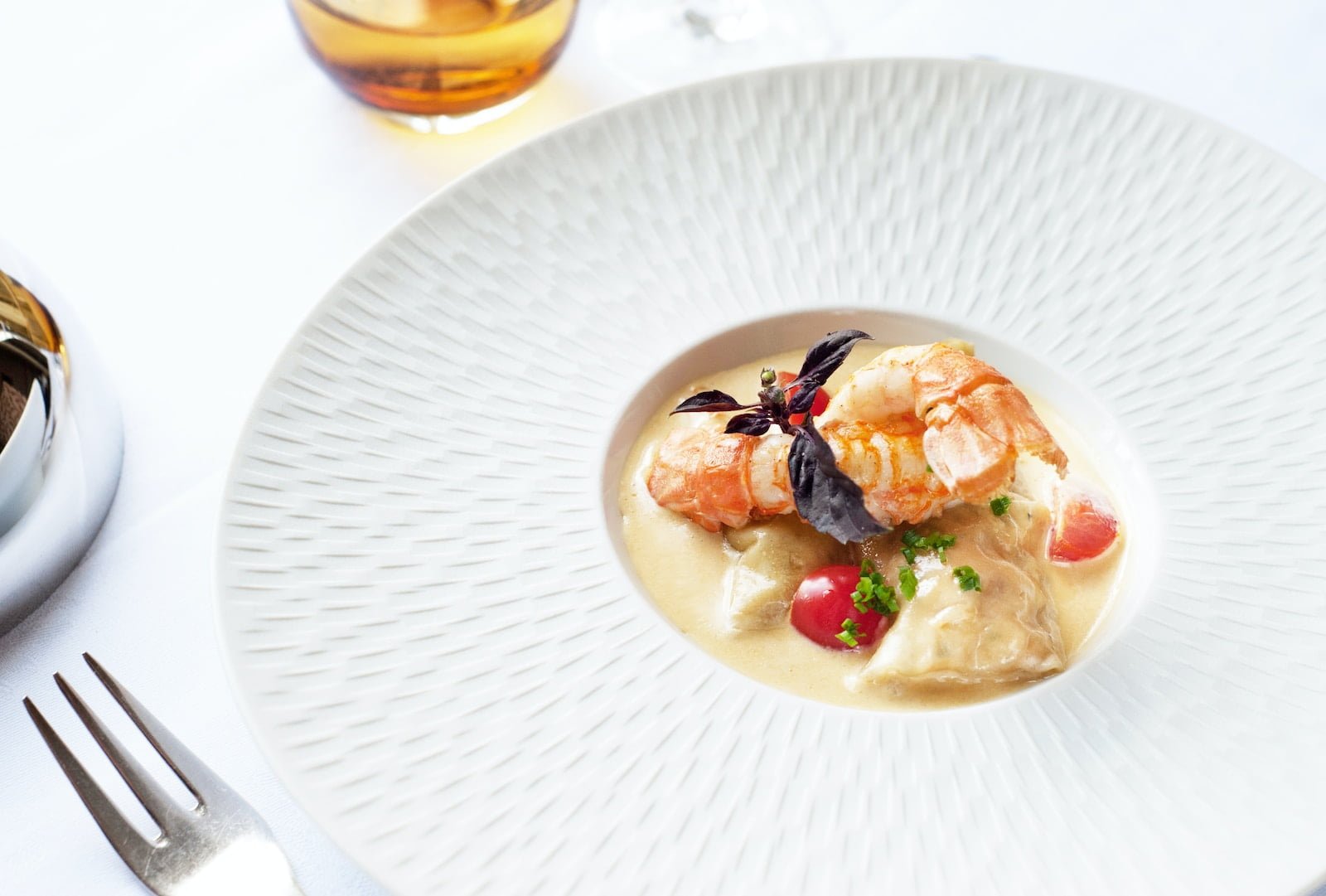- Introduction to Gourmet Cuisine
- Characteristics of Gourmet Cuisine
- Exploring Gourmet Ingredients
- Gourmet Cooking Techniques
- Famous Gourmet Dishes
- The Art of Plating
- Gourmet Desserts and Pastry
- Pairing Wine with Gourmet Meals
- Gourmet Cuisine from Around the World
- Gourmet Cooking at Home
- Gourmet Food Festivals and Events
- The Rise of Gourmet Food Trucks
- Gourmet Cuisine for Special Diets
- The Future of Gourmet Cuisine
- FAQs
Introduction to Gourmet Cuisine

Gourmet cuisine, an extraordinary and elevated form of culinary art, goes beyond mere sustenance to become an experience of indulgence and refined taste. This article delves into the world of gourmet cooking, unraveling its origins, unique characteristics, and global influence.
Definition of gourmet cuisine: At its core, gourmet cuisine encompasses the preparation and presentation of food with the utmost precision and creativity. It involves the use of premium-quality, fresh ingredients to create dishes that delight the senses.
Historical background and evolution: Gourmet cuisine has a rich history dating back to ancient civilizations, but it gained prominence during the Renaissance in Europe. Over time, it has evolved, drawing influences from different cultures and regions.
The essence of gourmet cooking: Gourmet cooking is an art form that celebrates the marriage of flavors, textures, and aesthetics. It transcends the boundaries of traditional cooking, exploring new techniques and combinations.
Characteristics of Gourmet Cuisine

Use of high-quality, fresh ingredients: Gourmet chefs prioritize sourcing the finest ingredients, from luxurious specialty meats and seafood to exotic fruits and vegetables. The quality of the raw materials lays the foundation for exceptional dishes.
Culinary techniques and precision: Gourmet cooking demands impeccable culinary skills and attention to detail. Chefs employ various techniques, from sous vide cooking to molecular gastronomy, to create dishes with perfect textures and flavors.
Creativity and innovation in presentation: The art of plating is crucial in gourmet cuisine. Chefs artistically arrange dishes, balancing colors and textures, and garnishing them with edible decorations to elevate the dining experience.
Exploring Gourmet Ingredients
Specialty meats and seafood: Gourmet cuisine often features delicacies like Kobe beef, Iberico ham, and fresh lobster. These premium meats are meticulously prepared to enhance their natural flavors.
Exotic fruits and vegetables: Fruits like dragon fruit, mangosteen, and durian, along with vegetables like white asparagus and Romanesco broccoli, find their way into gourmet dishes for their distinct tastes and appearances.
Rare spices and seasonings: Gourmet chefs experiment with rare spices and seasonings from around the world to add depth and complexity to their creations. Saffron, truffles, and vanilla from Madagascar are just a few examples.
Gourmet Cooking Techniques
Sous vide cooking: This precise and controlled cooking method involves vacuum-sealing ingredients and cooking them at low temperatures for extended periods, resulting in tender and flavorful dishes.
Molecular gastronomy: Gourmet cuisine often incorporates scientific principles to create surprising textures and presentations. Techniques like spherification and foams add a touch of wonder to the dining experience.

Infusion and flavor pairing: Gourmet chefs are masters of flavor pairing, combining ingredients that complement or contrast each other perfectly. Infusing oils, spirits, and vinegar with herbs and spices is a common practice.
Famous Gourmet Dishes
Foie gras with truffle glaze: A delicacy admired for its rich and buttery texture, foie gras is elevated further with a drizzle of truffle glaze, adding earthy and aromatic notes.
Lobster bisque with caviar: Velvety lobster bisque adorned with a dollop of caviar exemplifies the extravagance and refinement of gourmet cuisine.
Wagyu beef steak with red wine reduction: The marbled and tender Wagyu beef, served with a luscious red wine reduction, is a symphony of flavors that leaves a lasting impression.
The Art of Plating
Importance of visual appeal: In gourmet cuisine, presentation is as crucial as taste. Thoughtful plating enhances the diner’s anticipation and appreciation of the meal.
Balancing colors and textures: Chefs strategically use colors and textures to create visually stunning plates that are both appetizing and aesthetically pleasing.
Garnishing and edible decorations: From delicate herb leaves to intricate sugar sculptures, garnishes play a vital role in elevating the overall dining experience.

Gourmet Desserts and Pastry
Decadent chocolate creations: Gourmet desserts often revolve around chocolate, showcasing its versatility. From rich, velvety chocolate mousse to delicate chocolate truffles, each creation is a celebration of this beloved ingredient.
Delicate macarons and pastries: These colorful and dainty treats are a hallmark of gourmet pastry. The precise techniques required to achieve their perfect texture and appearance reflect the dedication of skilled pastry chefs.
Artistic sugar work and sculptures: Gourmet pastry chefs display their artistry through sugar work and sculptures that adorn desserts. From spun sugar nests to intricate sugar flowers, these creations are almost too beautiful to eat.

Pairing Wine with Gourmet Meals
Understanding flavor profiles: Pairing wine with gourmet cuisine is an intricate process that involves considering the flavors, aromas, and textures of both the food and the wine. Finding complementary or contrasting elements enhances the dining experience.
Complementing and contrasting flavors: For certain dishes, wine can elevate the flavors, while in others, it can provide a refreshing contrast. A well-chosen wine can enhance the overall harmony of a gourmet meal.
Recommendations for specific dishes: Expert sommeliers curate wine lists to accompany gourmet meals. They consider the specific ingredients and preparation techniques to suggest the perfect wine pairings.

Gourmet Cuisine from Around the World
French haute cuisine: The epitome of gourmet cuisine, French haute cuisine is characterized by meticulous preparation, classic techniques, and luxurious ingredients. Dishes like coq au vin and bouillabaisse exemplify this culinary tradition.
Japanese kaiseki: Kaiseki is an artful and refined multi-course meal that celebrates the seasons. It showcases the natural flavors of premium ingredients, and each dish is served with great attention to detail.
Indian royal feasts: With a rich culinary heritage, Indian royal feasts were known for their opulence and indulgence. Gourmet Indian cuisine offers an array of flavors, from fragrant biryanis to intricate Mughlai curries.
Gourmet Cooking at Home
Tips for home cooks: While gourmet cuisine is often associated with restaurant dining, home cooks can also embrace its principles. Attention to detail, creativity, and exploring new ingredients are essential aspects of gourmet cooking at home.
Must-have gourmet kitchen tools: Aspiring home chefs can equip their kitchens with essential tools like sous vide machines, micro planes for zesting, and precision scales to achieve gourmet results.
Recipes for beginners and enthusiasts: Gourmet cooking need not be intimidating. There are plenty of accessible recipes that cater to various skill levels, allowing anyone to try their hand at creating gourmet dishes.
Gourmet Food Festivals and Events
Popular international events: Gourmet food festivals attract food enthusiasts and renowned chefs from all corners of the globe. These events showcase the latest trends, innovative techniques, and exquisite flavors.
Showcasing culinary talents: Gourmet food festivals provide a platform for aspiring and established chefs to display their creativity and skills, inspiring each other and the attendees.
Experiencing the best of gourmet cuisine: Food enthusiasts have the opportunity to indulge in a wide array of gourmet dishes at these festivals, savoring the flavors and learning from culinary experts.
The Rise of Gourmet Food Trucks
Fusion gourmet street food: Food trucks have brought gourmet cuisine to the streets, blending flavors from different cultures to create exciting and accessible culinary delights.
Accessibility and affordability: Gourmet food trucks offer a more budget-friendly way to experience gourmet cuisine without compromising on taste or quality.
Changing perceptions of gourmet dining: Gourmet food trucks have challenged the notion that gourmet cuisine is exclusive to upscale restaurants, making it more approachable and inclusive.
Gourmet Cuisine for Special Diets
Vegan and plant-based options: Gourmet cuisine has embraced the growing interest in plant-based diets, offering innovative and exquisite vegan dishes that celebrate the natural flavors of vegetables and plant-based ingredients.
Gluten-free gourmet dishes: Catering to those with gluten sensitivities, gourmet chefs have developed a range of gluten-free options that maintain the same level of taste and presentation.
Catering to dietary restrictions: Gourmet cuisine caters to various dietary restrictions, ensuring that everyone can partake in the culinary experience regardless of their dietary needs.
The Future of Gourmet Cuisine
Technological advancements in cooking: The future of gourmet cuisine is intertwined with technological innovations that will revolutionize cooking techniques and presentation.
Sustainable gourmet practices: Gourmet cuisine is adapting to the demand for sustainable and eco-friendly practices, sourcing ingredients responsibly and minimizing food waste.
Expanding global influence: As culinary traditions from different regions continue to intertwine, the future of gourmet cuisine is bound to be even more diverse and dynamic.
Conclusion
In the world of gourmet cuisine, every dish is a work of art, meticulously crafted to tantalize the senses and create an unforgettable dining experience. From the use of high-quality ingredients to innovative cooking techniques, gourmet cooking is an intricate and refined art form. As it continues to evolve and embrace new influences, gourmet cuisine remains a celebration of creativity, culture, and the joy of exceptional food.







